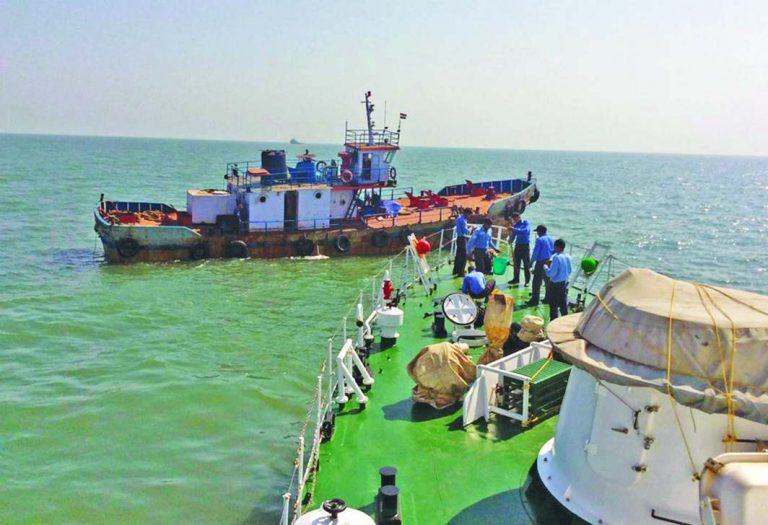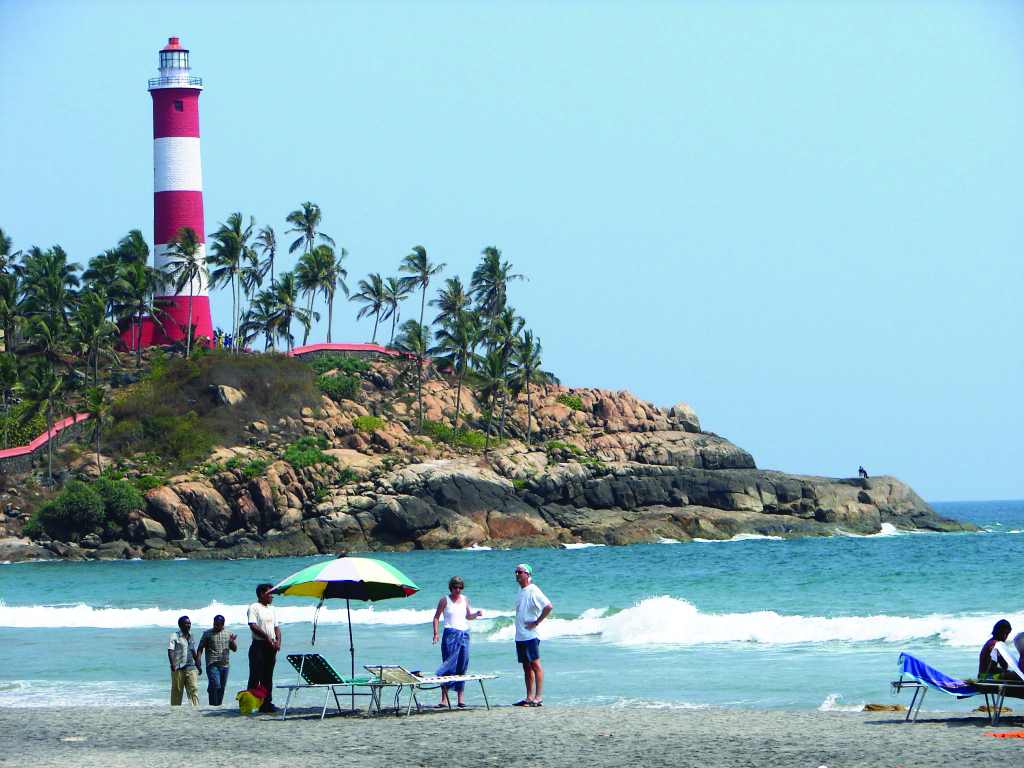
Above: The Indian Cost Guard apprehends a vessel involved in illegal activity. Photo: UNI
One of the largest drug hauls along the Gujarat coast has necessitated the need for greater surveillance along India’s shores and modern lighthouses have a major role to play here
~By Ramesh Menon
India seems to be under the radar of international drug traffickers. This was seen recently when the Indian Coast Guard seized 1,500 kg of heroin, valued at around Rs 3,500 crore, from a merchant ship off the Gujarat coast. This was one of the largest single hauls of narcotics and makes one wonder where the consignment would have gone had it not been detected.
Would it have found its way into the domestic market or been routed by the mafia out of the country making India a transit point? Either way, the entry violates the Narcotic Drugs and Psychotropic Substances (NDPS) Act, 1985, which views drug offences very seriously and imposes stiff penalties on those caught. Under the Act, abetment, criminal conspiracy and even attempts to commit an offence attract the same punishment as the offence itself. Punishments under this Act can, in some cases, lead to the death penalty.
IN THE CROSSHAIRS
In this case, a merchant ship, Henry, aroused the suspicion of the National Technical Research Organisation (NTRO), a government intelligence-gathering agency, as it was not expected to anchor at any of the ports in Gujarat. It was earlier used to carry diesel to supply to other ships in mid-sea, but was this time used to transport drugs. Clearly, an international drug network seemed to be at work and alarmed Indian authorities. While earlier, Pakistan, Bangladesh and Nepal were known to be havens for drug traffickers, India now seems to be on their radar too.
Investigations revealed that Suprit Tiwari, the captain, and the crew of the ship had diverted it to the Gujarat coast after they had struck a deal with Indian counterparts, Subhash Yadav and Irfan Shaikh, who were ready to buy the drugs and send them to Egypt. The captain, it seems, had negotiated to sell the drugs in India for Rs 500 crore. The case has been handed over to the Narcotics Control Bureau.
The NTRO then notified the Coast Guard when it sensed that the ship was carrying contraband and could use the hawala channel to carry out the deal. Suspicions about the ship and its crew grew as it was transmitting its identity as Prince-II and not as Henry. The last port of call was Chabahar in Iran.

NEW ROUTES
For a long time now, Afghanistan drug cartels have used the Indian Ocean to move contraband to western markets via East Africa as it is less likely to be detected. The United Nations Office on Drugs and Crime has said that there is a lot of evidence of large volumes of heroin crossing the Indian Ocean as over 9,300 kg of high purity heroin was caught in dhows in the last three years. Seven months ago, Sri Lankan authorities seized 800 kg of cocaine worth Rs 4,000 crore from an India-bound ship docked at a Colombo port and which had sailed from Ecuador.
Fortunately for India, all maritime activity around its shores can be electronically monitored with the installation of high-tech gadgetry which was installed after the Mumbai terror attacks where terrorists from Pakistan landed on the city’s shore. In this regard, India’s lighthouses have a major role to play.
Besides guiding maritime traffic all along the 7,517-km-long coastline, 74 lighthouses with state-of-the-art radars act as base stations for the Automatic Identification System (AIS). Here, officials sitting in master control rooms in Mumbai, Kandla and Vishakapatnam watch the movement of every ship along India’s coastline on their monitors. The lighthouses can keep a watch within a radius of 50 km.
This has helped strengthen anti-piracy measures and ensured the safety of ships with the help of communication transponders that help them keep in constant touch with officials onshore. It has also helped in search and rescue operations.
Unauthorised and unidentified boats and ships are monitored through a set of cameras that work round the clock in a lighthouse. Using thermal sensing technologies, they detect the heat generated by the engines of any ship coming within their range.
There will be 36 such stations on the mainland, six in Lakshadweep and Minicoy and four in the Andaman and Nicobar Islands. There will also be 38 additional remote radar sites, a few of them in the lighthouses. Once fishing boats are fitted with transponders and digitally registered with the coastal states, the AIS Network will be able to dynamically identify them. The data from the radars and transponders can be developed to understand what is happening in the sea.

